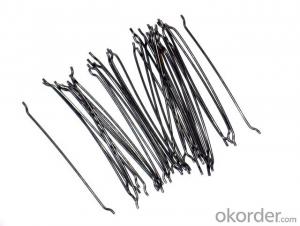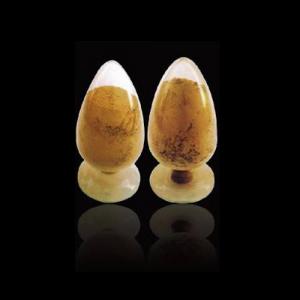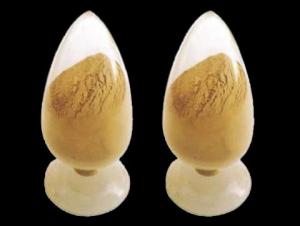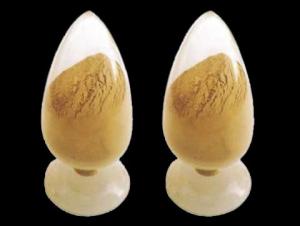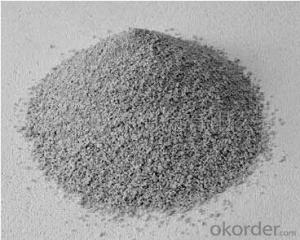Calcined Petroleum Coke Supply With Large Quantity
- Loading Port:
- Shekou
- Payment Terms:
- TT OR LC
- Min Order Qty:
- 20 m.t
- Supply Capability:
- 1000 m.t/month
OKorder Service Pledge
OKorder Financial Service
You Might Also Like
Factory Background
The factory is majorly running and operating carbon additive (pitch coke, calcined petroleum coke and anthracite), low nitrogen carbon additive, and brake pad making material. Company is the long term supplier of Sinosteel Corporation, Shanghai Carbon Corporation, the plant of SGL Group the Carbon Company in China and some largest special carbon products producing plants.
YUAI also supplies huge amout of high quality carbon additive and graphite carbon additive to steel plants, foundries and ferrotungsten plants. YUAI has been assigned by BAO STEEL as the only organization for processing pitch coke for export purpose. The group’s major products are constantly exported to Japan, Korea, Malaysia, South East Asia countries, Europe and America, which receive praises by our consumers.
The group has invested numbers of calcinators in Anhui China to ensure the capability of producing and processing huge amount of carbon additive. Further investment is on process. According to the orders from customers, YUAI is able to processing and providing different specifications of carbon additive and other products. To provide best quality of products and to offer customers most satisfied service is YUAI’s operating objectives.
Calcined Petroleum Coke
FC:98.5%min,
S:0.5%max
A:0.8%max
V:0.7%max
Mositure:0.5%max
Size:1-5mm
This product is mainly used in steel-making and foundry. Calcined Petroleum Coke
Calcined Petroleum Coke comes from delayed coke which extracted from oil refinery. Although Calcined Petroleum Coke contains a little bit higher level of sulfur and nitrogen than pitch coke, the price advantage still makes it widely used during steel-making and founding as a kind of carbon additive/carburant.
Packaging & Delivery
Packaging Detail:25kg paper bag into 1t weaving bag 5kg, 10kg and 20kg weaving bag into 1t weaving bag 25kg weaving bag put on pallet covered with entanglement wrap product direct into packing bag 25kg paper bag put on pallet covered with entanglement Wrap 25kg weaving bag into 1t weaving bag.
Delivery Details: 7 days
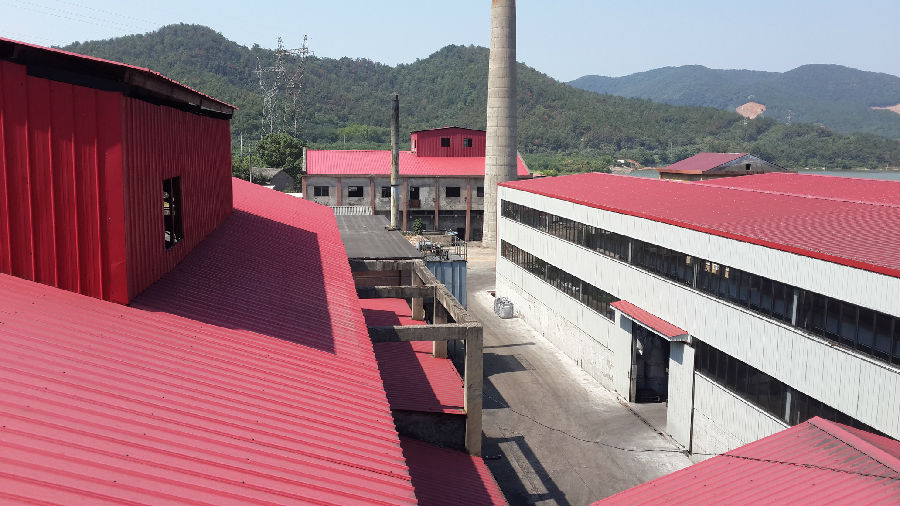
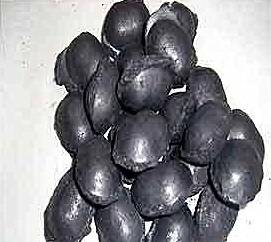
- Q:How do monolithic refractories prevent thermal shock in the iron and steel industry?
- The iron and steel industry heavily relies on monolithic refractories to prevent thermal shock. These refractories offer exceptional thermal insulation and resistance to extreme temperatures, playing a vital role in maintaining the integrity of the refractory lining. Thermal shock occurs when there is a sudden and significant change in temperature, leading to stress and cracks in the refractory lining. Given the extremely high temperatures that can be reached in the iron and steel industry, the risk of thermal shock is particularly pronounced. To combat this, monolithic refractories possess a low thermal conductivity, enabling them to effectively insulate against rapid temperature fluctuations. This insulation property allows them to endure the extreme temperatures involved in the iron and steel production process without compromising their structural integrity. Moreover, monolithic refractories are specifically engineered to exhibit high thermal shock resistance. This means they can effectively absorb and distribute the thermal stresses caused by temperature variations, thereby minimizing the likelihood of cracking or spalling. Aside from their exceptional thermal insulation and shock resistance, monolithic refractories also demonstrate outstanding corrosion and erosion resistance. This is especially important in the corrosive environment of the iron and steel industry, where molten metals, slag, and gases are present. By providing a dependable and long-lasting lining in furnaces, ladles, and other equipment utilized in the iron and steel industry, monolithic refractories ensure that thermal shock is mitigated. Consequently, this helps to maintain the efficiency and productivity of the production process while extending the lifespan of the equipment.
- Q:How do monolithic refractories improve the quality and consistency of iron and steel products?
- Monolithic refractories enhance the quality and consistency of iron and steel products by providing excellent resistance to high temperatures, thermal shock, and chemical attacks. These refractories form a seamless lining within the furnaces and other equipment used in the production process, ensuring optimal insulation and minimizing heat loss. This insulation helps in maintaining stable and controlled temperatures, preventing unwanted variations that can affect the final product's quality. Additionally, monolithic refractories' durability and resistance to wear and tear contribute to consistent and reliable performance, resulting in improved iron and steel product quality.
- Q:How do monolithic refractories perform in electric arc furnace roof applications?
- Due to their unique properties and characteristics, monolithic refractories are extremely effective when used in electric arc furnace (EAF) roof applications. Comprised of a single, solid material, these refractories offer several advantages specific to this application. To begin with, monolithic refractories provide exceptional thermal insulation, a critical factor in EAF roof applications. Traditional brick refractories can suffer structural damage from the intense heat generated in the furnace. However, monolithic refractories possess a higher resistance to thermal shock, reducing the risk of cracking and spalling. This ensures that they maintain their integrity and insulation properties even under extreme temperature conditions. Furthermore, monolithic refractories exhibit high strength and abrasion resistance, guaranteeing their durability and longevity in EAF roof applications. The roof of an electric arc furnace is subjected to harsh conditions, including the impact of scrap materials and the erosive effects of molten metal and slag. Monolithic refractories are specifically designed to withstand these challenges, offering superior resistance to mechanical wear and erosion. Another advantage of monolithic refractories lies in their ease of installation. Unlike traditional brick refractories, which necessitate time-consuming and complex installation processes, monolithic refractories can be applied rapidly and efficiently. They can be cast, gunned, or sprayed onto the roof surface, adapting to any shape or contour. Consequently, installation or repair downtime is reduced significantly. Moreover, monolithic refractories contribute to increased energy efficiency in EAF roof applications. Their superior insulation properties minimize heat loss, resulting in reduced energy consumption and cost savings. This is particularly crucial for electric arc furnaces, as their efficiency and productivity heavily rely on maintaining high temperatures for metal melting and processing. Any heat loss can have a significant impact on these factors. In conclusion, monolithic refractories are highly suitable for electric arc furnace roof applications due to their exceptional thermal insulation, strength, abrasion resistance, ease of installation, and energy efficiency. These refractories offer significant advantages over traditional brick refractories, ensuring optimal performance and extended service life in the demanding environment of an electric arc furnace.
- Q:What are the typical properties of monolithic refractories used in iron and steel industry?
- Monolithic refractories used in the iron and steel industry generally possess several key properties that make them suitable for the harsh operating conditions in these industries. Firstly, monolithic refractories have excellent thermal shock resistance. They can withstand rapid temperature changes without cracking or spalling, which is crucial in the iron and steel industry where the heating and cooling processes can be highly intense. Secondly, these refractories exhibit high refractoriness, meaning they can withstand extremely high temperatures without losing their strength or shape. This is essential in environments where temperatures can reach well above 1000 degrees Celsius. Additionally, monolithic refractories used in the iron and steel industry are known for their excellent corrosion resistance. They can resist the corrosive effects of molten metals, slags, and gases that are commonly encountered in these industrial processes. Furthermore, these refractories have good mechanical strength and abrasion resistance, allowing them to withstand the physical stresses and wear caused by handling and mechanical operations. Another important property of monolithic refractories is their ability to form strong bonds with the existing refractory lining. This ensures a secure and long-lasting installation, reducing the risk of failure and minimizing downtime for maintenance or repairs. Lastly, these refractories often have low porosity, which prevents the infiltration of molten metal or slag into the lining. This helps to maintain the integrity of the refractory structure and prolong its service life. Overall, the typical properties of monolithic refractories used in the iron and steel industry include thermal shock resistance, high refractoriness, corrosion resistance, mechanical strength, strong bonding, and low porosity. These properties collectively contribute to the efficient and reliable operation of iron and steel manufacturing processes.
- Q:How are monolithic refractories different from traditional refractories?
- Monolithic refractories are different from traditional refractories in terms of their composition, installation method, and performance characteristics. Firstly, monolithic refractories are composed of a single material, as the name suggests, whereas traditional refractories are typically made up of multiple materials. This single material composition of monolithic refractories allows for better control over their properties and performance. Secondly, the installation of monolithic refractories is different from traditional refractories. Traditional refractories are usually installed in the form of bricks or precast shapes, which are assembled together to form the desired lining. On the other hand, monolithic refractories are supplied in a ready-to-use form, such as a dry mix or a suspension, which is then poured, sprayed, or gunned into place. This makes the installation process of monolithic refractories faster and more efficient. Lastly, monolithic refractories offer superior performance characteristics compared to traditional refractories. Monolithic refractories have better thermal shock resistance, higher hot strength, and improved resistance to chemical attacks. Additionally, they can be more easily repaired or patched compared to traditional refractories, which often require the replacement of entire bricks or shapes. Overall, the main differences between monolithic refractories and traditional refractories lie in their composition, installation method, and performance characteristics. Monolithic refractories offer better control over properties, easier installation, and superior performance, making them a preferred choice in many industrial applications.
- Q:How do monolithic refractories improve the lining of converters and refining vessels?
- Monolithic refractories enhance the lining of converters and refining vessels by providing superior thermal insulation, chemical resistance, and structural integrity. They eliminate the need for bricklaying, offering a seamless lining with reduced joints, thereby minimizing heat loss and ensuring efficient heat transfer. Additionally, monolithic refractories are highly resistant to the corrosive effects of molten metals and slag, prolonging the lifespan of the lining. Their flexibility enables easy installation and repair, resulting in reduced downtime and improved overall performance of converters and refining vessels.
- Q:What are the recommended curing and drying procedures for monolithic refractories?
- The curing and drying procedures for monolithic refractories vary depending on the specific type and composition of the material. However, there are some general guidelines that can be followed. Curing involves allowing the refractory material to set and harden. This is achieved by subjecting the material to controlled temperature and humidity conditions. The purpose of curing is to develop the desired physical and chemical properties of the refractory, such as strength and resistance to thermal shock. Drying, on the other hand, involves removing moisture from the refractory material. This is important because moisture can cause cracking or spalling when exposed to high temperatures. Drying usually takes place after the curing process. The curing and drying procedures for monolithic refractories typically involve the following steps: 1. Preheating: Before applying the refractory material, it is necessary to preheat the surface where it will be applied. This prevents rapid moisture evaporation and ensures good adhesion of the refractory. 2. Mixing and application: The refractory material should be mixed according to the manufacturer's instructions and applied to the desired surface using appropriate techniques such as gunning, casting, or ramming. 3. Initial curing: After application, the refractory should be cured at a controlled temperature and humidity for a specific duration. This allows the material to set and strengthen. The curing temperature and duration may vary depending on the specific refractory material, but it is advisable to start with a lower temperature and gradually increase it. 4. Drying: Once the initial curing is complete, the refractory should be dried to eliminate any remaining moisture. This is done by gradually increasing the temperature in a controlled manner. The drying temperature and duration may vary depending on the specific refractory material, but it is important to avoid rapid temperature changes to prevent thermal stress and cracking. 5. Final curing: After drying, the refractory should be allowed to cool gradually to room temperature. This final curing step further enhances the strength and stability of the refractory. It is crucial to follow the manufacturer's guidelines and recommendations for the specific refractory material being used, as different materials may have different curing and drying requirements. Additionally, factors such as the size and shape of the refractory installation, as well as the surrounding environment, may also affect the curing and drying procedures. It is always advisable to consult with a refractory specialist or manufacturer to ensure the proper curing and drying procedures are followed for optimal performance and longevity of the monolithic refractories.
- Q:How do monolithic refractories contribute to energy efficiency in iron and steel production?
- Monolithic refractories contribute to energy efficiency in iron and steel production by providing superior insulation and heat containment properties. These refractories have low thermal conductivity, which minimizes heat loss and ensures that the intense temperatures required for the production process are maintained within the furnace or kiln. This reduces the need for excessive fuel consumption and enables more efficient use of energy resources. Additionally, monolithic refractories can withstand high temperatures without significant structural damage, prolonging their lifespan and reducing the frequency of replacement, further contributing to energy efficiency in the industry.
- Q:What are the factors influencing the choice of monolithic refractories for different furnace types?
- There are several factors that influence the choice of monolithic refractories for different furnace types. Firstly, the operating temperature of the furnace is a crucial factor as different monolithic refractories have different temperature resistance levels. Secondly, the type of material being processed in the furnace is important as certain materials may require specific refractories to withstand their corrosive or abrasive nature. Thirdly, the furnace design and its heating method also play a role in determining the suitable refractory material. Additionally, the thermal conductivity, thermal shock resistance, and mechanical strength of the refractory are considered to ensure optimal performance and durability. Finally, cost, availability, and installation requirements are factors that can influence the choice of monolithic refractories for different furnace types.
- Q:What are the advantages of using insulating castables in the iron and steel industry?
- The advantages of using insulating castables in the iron and steel industry are numerous. Firstly, insulating castables have excellent thermal insulation properties, which help to reduce heat loss during the manufacturing process. This leads to increased energy efficiency and cost savings for the industry. Additionally, insulating castables have a low thermal conductivity, meaning they can withstand high temperatures without transferring excessive heat. This is crucial in the iron and steel industry, where temperatures can reach extremely high levels. By using insulating castables, the industry can ensure the longevity and durability of its equipment and structures. Furthermore, insulating castables have good resistance to thermal shock, meaning they can withstand rapid temperature changes without cracking or breaking. This is particularly beneficial in the iron and steel industry, where the heating and cooling processes are frequent and intense. Lastly, insulating castables have a low density, making them lightweight and easier to handle and install. This not only saves time and effort during installation but also reduces the structural load on equipment and structures. Overall, the use of insulating castables in the iron and steel industry offers advantages such as improved energy efficiency, enhanced durability, resistance to thermal shock, and ease of installation.
1. Manufacturer Overview |
|
|---|---|
| Location | |
| Year Established | |
| Annual Output Value | |
| Main Markets | |
| Company Certifications | |
2. Manufacturer Certificates |
|
|---|---|
| a) Certification Name | |
| Range | |
| Reference | |
| Validity Period | |
3. Manufacturer Capability |
|
|---|---|
| a)Trade Capacity | |
| Nearest Port | |
| Export Percentage | |
| No.of Employees in Trade Department | |
| Language Spoken: | |
| b)Factory Information | |
| Factory Size: | |
| No. of Production Lines | |
| Contract Manufacturing | |
| Product Price Range | |
Send your message to us
Calcined Petroleum Coke Supply With Large Quantity
- Loading Port:
- Shekou
- Payment Terms:
- TT OR LC
- Min Order Qty:
- 20 m.t
- Supply Capability:
- 1000 m.t/month
OKorder Service Pledge
OKorder Financial Service
Similar products
New products
Hot products
Hot Searches
Related keywords









